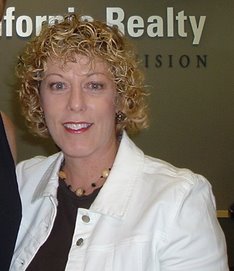Thursday, November 22, 2007
Active versus Passive Investing
Active versus Passive Investing – Thanksgiving Day 11-22-07
The other day I was reading a pre-publication interview with a financial planner in Denver based on some questions from a reporter with the Denver Post. The planner had such an unusual name: Steve Smith. There is probably only one person in the country with a name like that. ( ;-) – smirk) Anyway, I used to be a financial planner, or rather do that work for a living, and can recall how my own thinking was prejudiced by the industry in which I was working.
I gave very little thought to the difference between an active and a passive investor back then, but Steve’s comments reminded me of how I look at investing now. Passive investors do things like dollar-cost-average into a mutual fund; they contribute to their 401(k) plan or IRA and get the help of a stockbroker, friend or financial planner to help them choose the investments. They might choose stocks, bonds, mutual funds, or even REITs. The point is passive investors give their money to someone else and hope they have a decent return, like 8-12% per year. I am not saying there is anything wrong with this, and it is probably appropriate for 80-90% of the population. I am suggesting this is not the only way to invest, but it seems to be the only method offered to the public that seeks investment advice.
Since I have been both a passive and active investor, a Chartered Life Underwriter and a Certified Financial Planner, I have both the education and experience to speak about both approaches to investing. I have done very well with real estate investments. I have done okay with stock investments earning 1% while others were losing 30-40% of their portfolios.
My views that are not necessarily in conflict with what Steve, or any other financial planner or stockbroker, might have to say but rather I want to add another dimension to the typical comments about real estate versus stocks.
1. Invest nationally or globally instead of just local:
Local markets can be excellent. As an example I have made millions of dollars by staying in the Los Angeles area. Unfortunately, it may not be fair to compare a local market like Denver Colorado to Los Angeles County. In the Los Angeles metro-plex area we have 14 million people, which is greater than the population of 46 states in the United States. There are only 4 states with a population greater then my metropolitan area. However, it is still "local" for me. New York was "local" for Donald Trump for a long time, and he did okay.
2. Invest in REITs to get real estate diversification:
REITS are Real Estate Investment Trusts. They group real estate properties, like apartment buildings, office buildings, shopping malls, industrial parks, etcetera, into a big pool, and sell shares like a mutual fund. It is easier for most individuals to come up with the money to own a part of an office building than to buy the whole building. Also, most people have no experience in managing an office building. And, while REITs give people diversity they also give the investor no control, just like a mutual fund or stock. Diversity is great for mediocre returns. If you want great returns you need to own the office building, mini-storage facility or apartment building and be an active investor.
3. Beware of sweat investment as a part of capital investment:
Yes, it is difficult to determine my investment return from capital versus sweat. When buying apartment buildings I was willing to work to produce great results. I am not a passive investor: My partner and I select the properties, improve them though remodeling or repairs. After that I manage the properties: Collect the rents; issue 3-day-pay or quit notices; choose the tenants; cleaning crew, painters, and plumbers. But I have been handsomely rewarded for it, far beyond the 5% fee that is customary for a management company.
I understand that most people do not have the willingness or experience to be active investors, but if they do, the rewards are far greater than historical returns for the stock market or real estate in general. When you combine the returns on commercial real estate from New York to Los Angeles you get numbers like a 7% return on capital. This provides no guidance for decision-making regarding investing in real estate in general, or in a local market specifically.
What the heck does a 7% return mean to me in Los Angeles when my partner and I are investing in apartment buildings that have been mismanaged and have deferred maintenance? Nothing, that's what. When we can take a building and double the rental income in 6 months through remodeling and effective management those national numbers about the returns on commercial real estate are meaningless.
Again, I am talking about active investing, not passive, and that type of investing most often is ignored in those interviews with financial planners, stock brokers and the like.
Have a wonderful Thanksgiving holiday and say a prayer for our troops.
Rennie
Subscribe to:
Post Comments (Atom)



No comments:
Post a Comment